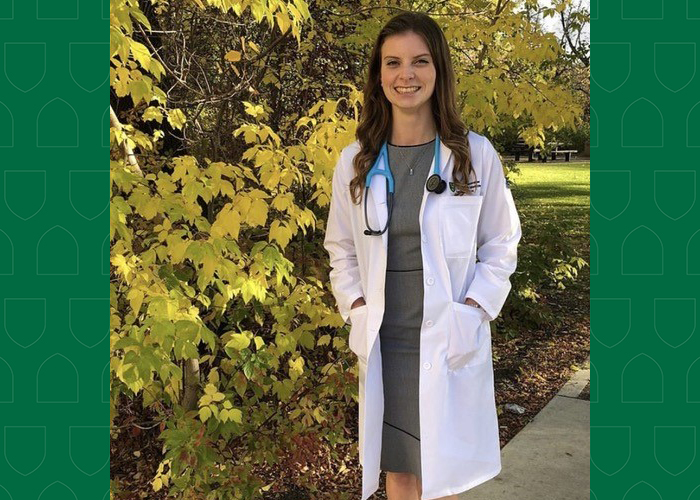
What I Did Last Summer: Kyra Ives on neuromuscular disease
One of the trickiest parts of treating patients with neuromuscular diseases such as Parkinson's and Multiple Sclerosis is figuring out how to keep them active and moving.
By Researchers Under the ScopeListen to all episodes of Researchers Under the Scope podcast.
Subscribe to the podcast on Spotify or Apple Podcasts
Highlights from undergraduate summer research projects at the University of Saskatchewan's College of Medicine.
Fourth-year medical student Kyra Ives dove in, spending one summer studying the effect of deep brain stimulators on patients with Parkinson's disease.
“It’s really neat, and not much honestly is known about how it works,” said Ives.
Using specialized sensors and gear, she and the mobility lab team watched participants experience major differences in tasks involving gait and balance, as the stimulation levels were altered.
Ives recalled one deep brain stimulator participant so excited that at one point he tossed his walker aside during the trials, walking down the carpet with ease.
“Changing the frequency does seem to be altering participants walking and balance,” she said. “The optimal settings really seem to vary across individuals.”
Through that work though, Ives also uncovered a number of obstacles for people with both Parkinsons and MS.
“Just chatting with the participants, it became really clear there was a real gap in services for people in the province,” she said.
That's something she and the mobility lab team analyzed more closely the next summer, after MS patients sent in photo dispatches of their daily lives.
“There’s so much hope and resilience among this patient population,” said Ives, who one day hopes to specialize in physiatry.
“It’s really inspiring to me.”
